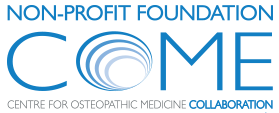A Unifying Neuro-Fasciagenic Model of Somatic Dysfunction – underlying mechanisms and treatment -PART II
This paper offers an extensive review of the main fascia-mediated mechanisms underlying various therapeutic processes of clinical relevance for manual therapy. The concept of somatic dysfunction is revisited in light of the several fascial influences that may come into play during and after manual treatment. A change in perspective is thus proposed: from a nociceptive model that for decades has viewed somatic dysfunction as a neurologically-mediated phenomenon, to a unifying neuro-fascial model that integrates neural influences into a multifactorial and multidimensional interpretation of manual therapeutic effects as being partially, if not entirely, mediated by the fascia. By taking into consideration a wide spectrum of fascia-related factors – from cell-based mechanisms to cognitive and behavioural influences – a model emerges suggesting, amongst other results, a multidisciplinary-approach to the intervention of somatic dysfunction. Finally, it is proposed that a sixth osteopathic ‘meta-model’ – the connective tissue-fascial model – be added to the existing five models in osteopathic philosophy as the main interface between all body systems, thus providing a structural and functional framework for the body’s homeostatic potential and its inherent abilities to heal.







